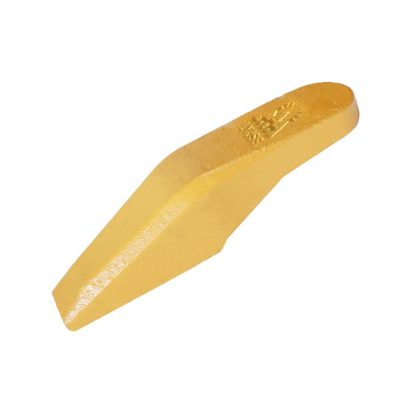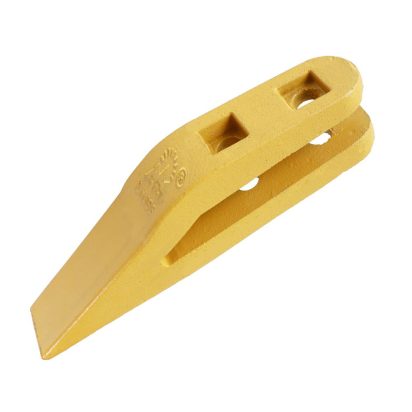In the world of construction equipment, efficient digging and material handling are critical to maximizing productivity. Whether you are using an excavator or a loader, the durability and design of bucket teeth and adapters are essential to the performance of your machinery. SEM loader teeth and adapters play a vital role in ensuring smooth and efficient operation, especially in tough environments like construction sites, mining areas, and quarries.
What Are SEM Loader Teeth?
SEM loader teeth are designed to handle the heavy demands of earthmoving equipment, especially loaders and excavators. These teeth are the ground-contact tools that penetrate the soil, gravel, or other materials during excavation. Bucket teeth are typically made from forged steel, often treated with high-heat processes to ensure they have the necessary abrasion resistance and wear life to handle extreme conditions.
These excavation tools are built to last, but their longevity is highly dependent on the quality of materials used, the design of the teeth, and how frequently they are replaced. Loader bucket teeth need to withstand constant tooth wear, especially when working in abrasive conditions.
Why Adapters Are Essential
Tooth adapters serve as the bridge between the loader teeth and the bucket. These bucket adapters are critical because they hold the tooth systems securely in place, ensuring that the loader teeth perform optimally during digging operations. Without well-fitted adapters, the excavator teeth could become loose, which can result in poor digging performance and even cause damage to other parts of the loader or excavator.
Adapters are typically constructed from heat-treated steel or cast steel, giving them the strength to withstand high loads. The tooth retention mechanism in these adapters, such as locking pins or other tooth securing mechanisms, ensures that the teeth stay in place during even the most rigorous material handling tasks.
The Role of Ground Engaging Tools (GET)
In construction, the term ground engaging tools (GET) refers to all the components that come into direct contact with the ground during excavation and loading operations. These include the bucket teeth, adapters, and any additional wear parts or replacement parts that affect the loader bucket’s ability to dig and handle material.
The right combination of digging implements, such as excavator tooth adapters and loader teeth, is key to optimizing excavation tools. These tools significantly enhance the performance of any excavation machinery, increasing digging efficiency and the overall excavation speed.
Key Considerations for Choosing SEM Loader Teeth and Adapters
When selecting SEM loader teeth and tooth adapters, there are several factors you need to consider:
1. Material and Durability
The material from which the bucket teeth and adapters are made is crucial. Most high-quality loader teeth are made from alloy steel or forged steel, which provides superior durability. Additionally, heat treatment enhances the wear resistance, ensuring that the teeth and adapters last longer even in high-wear environments.
2. Tooth and Adapter Fit
A secure and precise fit between the tooth and the adapter is essential for effective tooth retention. If the fit is too loose, it can lead to poor performance and even tooth loss during operation. Many modern tooth systems come with advanced locking mechanisms or retention pins to secure the teeth in place.
3. Tooth Design and Profile
The design of loader teeth has a significant impact on its ability to cut through different materials. Teeth with optimized cutting edges and geometric profiles can easily penetrate the ground, improving the digging performance of the loader bucket. Additionally, teeth designed with enhanced ground-contact profiles improve soil penetration, reducing wear on the bucket edges.
4. Wear Life and Cost-Effectiveness
Both the wear life and cost-effectiveness of SEM loader teeth and adapters should be considered. While high-quality teeth may come with a higher upfront cost, they offer longer wear life and greater excavation durability, making them more cost-effective in the long run.
Improving Loader Efficiency with SEM Teeth and Adapters
Efficiency is everything when it comes to construction equipment. The right combination of bucket teeth and tooth adapters can greatly enhance a loader’s performance, improving the machine’s excavation productivity and reducing downtime caused by equipment failure or tooth replacement.
Here are a few ways in which SEM teeth and adapters improve loader efficiency:
- Reduced Tooth Wear: High-quality teeth and adapters minimize metal wear and ensure a longer wear life, allowing you to work longer without frequent replacements.
- Enhanced Ground Penetration: Optimized tooth profiles improve the loader’s ability to penetrate hard or compact ground, reducing strain on the machine and improving the overall digging efficiency.
- Ease of Tooth Replacement: Tooth systems with quick-change mechanisms or tooth locking systems make it easier to replace worn-out teeth, reducing maintenance time.
Maintenance Tips for SEM Loader Teeth and Adapters
Proper equipment maintenance is crucial to extending the life of SEM loader teeth and adapters. Here are some tips to keep your equipment in top shape:
1. Regular Inspections
Conduct frequent inspections of the loader bucket, teeth, and adapters. Look for signs of wear and tear, such as tooth erosion, abrasion damage, or any loose-fitting parts. Addressing issues early can prevent costly repairs later on.
2. Timely Replacements
Replacing worn-out teeth and adapters at the right time is essential. Delaying tooth replacement can result in further damage to the bucket, leading to expensive repairs.
3. Use the Right Tools
When installing or replacing teeth and adapters, always use the appropriate tools, such as locking pins or retention pins. Incorrect installation can compromise the fit, leading to tooth loss or poor performance.
4. Lubrication and Cleaning
Keep the excavator tooth adapters and bucket teeth clean and properly lubricated to prevent rust and other forms of corrosion. This also helps in maintaining a tight fit between the tooth and adapter.



